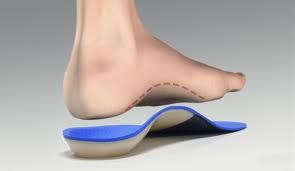Plantar Fasciitis is a common painful condition of the foot, where pain is often felt at the heel or under the arch of the foot. The plantar fascia is a thick fibrous band of tissue in the foot that starts at the heel and runs along the foot, finishing just behind the toes, its job is to help support the main arch of the foot. Plantar fasciitis occurs when this band becomes inflamed and micro tears occur.
In most cases there is no exact cause for plantar fasciitis, however there are some factors that increase your risk of developing the condition, these include:
- Pronated (flat) feet
- Very high arches in your feet
- Sudden increase in activity or high intensity activities such as running
- Tight Achilles / calf muscle
- Being overweight
- Poor footwear
Pain is the most common symptoms of plantar fasciitis, most commonly at the heel. This pain is often worse first thing in the morning or when getting up after a resting, and usually eases after walking for a few minutes. Pain can also be increased after exercise or long periods of time on your feet. Resting usually eases the pain.
Rest – Whilst the plantar fascia is inflamed and sore, it is best to avoid exercises that cause a large load to be placed on the plantar fascia, such as running. It is also best to avoid excessive walking or standing.
Ice - Apply ice. Hold a cloth-covered ice pack over the area of pain for 15 to 20 minutes three or four times a day or after activity. Or try ice massage. Freeze a water-filled plastic bottle and roll it over the site of discomfort for about five to seven minutes. Regular ice massage can help reduce pain and inflammation.
Stretching – Stretching of your calf, Achilles tendon and plantar fascia can be beneficial in treating plantar fasciitis. Click here for some suggested stretches.
Orthoses – Foot Orthoses can assist in the treatment of plantar fasciitis by providing support to the foot posture, relieving the strain on the plantar fascia. In people with flat feet, orthotics help to correct the foot posture and stop it from collapsing during weight bearing. For those with high arches, orthotics help to redistribute pressure over the whole foot, changing the action of the plantar fascia.
At Orthokids, our Orthotists will conduct a biomechanical evaluation to help you decide whether orthoses are likely to improve the pain suffered from plantar fasciitis.
Hold each stretch for at least 30 seconds:
- don't bounce
- do one or two repetitions, two to three times a day.
Clockwise from upper left:
- To strengthen arch muscles, place a towel on the floor, grab the towel with your toes and pull it toward you.
- While sitting, grasp your toes and gently pull them toward you until you feel a stretch in the arch of your foot. Stretch one foot at a time.
- Stand next to a wall, with your back leg straight and heel down. Move your hips forward until you feel a stretch in your calf. Switch legs and repeat.
- Stand on a step near the bottom of your stairs, put your weight on the ball of one foot and slowly lower that heel until you feel your calf muscle stretching. Repeat on the other side.
Contact Orthokids on:
(03) 9836 4480

